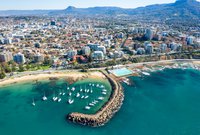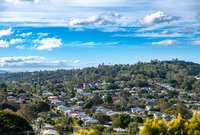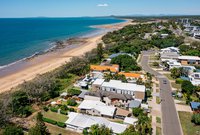Affordable & Liveable Property Guide 2nd Half 2020 - Melbourne
Median property prices in Melbourne Metro increased by 1.5% for houses to $990,000 from 2019 to 20201 and increased by 2.2% to $610,000 for units during the same period. Although this level of growth may be deemed subdued compared with normal circumstances, it represents a resilient market throughout COVID-19 lockdowns. Furthermore, price growth may come as a surprise to many, considering the severe restrictions in Melbourne and Victoria (VIC) of late, and in contrast to general predictions.

Overview
Median property prices in Melbourne Metro increased by 1.5% for houses to $990,000 from 2019 to 20201 and increased by 2.2% to $610,000 for units during the same period. Although this level of growth may be deemed subdued compared with normal circumstances, it represents a resilient market throughout COVID-19 lockdowns. Furthermore, price growth may come as a surprise to many, considering the severe restrictions in Melbourne and Victoria (VIC) of late, and in contrast to general predictions.
There is a unique opportunity in Melbourne Metro, as the current house market is more affordable than in 2018 (when the median price was $1,010,000), which benefits first home buyers. However, owners can be confident in their asset’s ongoing value, as there has been positive price growth over the past five years.
A key finding in this report was that the affordable and liveable suburbs identified can be found in all corners of Melbourne Metro. This opens more possibilities for first home buyers. Further, the median price was $800,000 for both houses and units. Interestingly, the last time this occurred was in 2nd Half 2019¥ report, pre-COVID-19 times. This suggests there is an increase in affordability for liveable suburbs, especially when compared with the 1st Half 2020₳ report. Combined with wider average vendor discounts, with sellers willing to offer a higher discount, buyers have a unique advantage.
Table 1 highlights top suburbs in Melbourne Metro based on price growth and total estimated value of projects commencing in the 2nd half of 20202.

Access to Market
The dominant proportion of houses sold in Melbourne Metro across 20201 (Figures 1 and 2) were in the premium price bracket of $1,200,000 and above (36.3%). Units also experienced high activity within the premium price bracket of $750,000 and above (29.4%). These findings (Figures 1 and 2) reflect Melbourne Metro’s market resilience, which can also be attributed to record low interest rates and multiple government stimulus.


Affordable & Liveable Suburbs
To identify affordable and liveable suburbs premiums of 51% for houses
and 1% for units were added to the VIC average home loan, which were below
those required to reach Melbourne Metro’s median prices (92% for houses and 18%
for units). Thus, the affordable and liveable suburbs are below Melbourne’s
median prices, meaning that the suburbs identified within this report are more
affordable for buyers.
Considering all methodology criteria (property trends,
investment, affordability, development, and liveability), Tables 2 and 3
identify key suburbs that property watchers should be focused on.


In September 2020, Melbourne Metro recorded a house rental yield of 2.6%. In the 12 months to Q3 2020, the median house rents grew by 2.1% to $490 per week. This is in conjunction with average days on the market declining by -6.9% to 27 days. Overall, this represents a highly resilient rental market throughout COVID-19 lockdowns.
In September 2020, Melbourne Metro recorded a vacancy rate of 3.8%, a record high over the past 3 years and reflective of COVID-19 lockdowns and restrictions. On the other hand, median unit prices in Melbourne Metro have become more affordable and restrictions are easing. This presents a unique opportunity for investors, as the vacancy rate in Melbourne Metro prior to COVID-19 was consistently under the Real Estate Institute of Australia’s healthy benchmark of 3.0%.
Methodology
This affordable and liveable property guide for Melbourne Metro analyses all suburbs within a 20km radius of the Melbourne CBD. The following criteria were considered:
- Property trends criteria – all suburbs have a minimum of 20 sales transactions for statistical reliability purposes. Based on market conditions suburbs have either positive, or as close as possible to neutral price growth between 2019 to 20201.
- Investment criteria – as of September 2020, suburbs considered will have an on-par or higher rental yield than Melbourne Metro, and an on-par or lower vacancy rate.
- Affordability criteria – identified affordable and liveable suburbs have a median price below a set threshold. This was determined by adding percentage premiums to the VIC average home loan, which was $515,5673 as of Q2 2020. Premiums of 51% for houses and 1% for units were added, which were below those required to reach Melbourne Metro’s median prices (92% for houses and 18% for units). This places the suburbs below Melbourne’s median prices, meaning that the suburbs identified within this report are more affordable for buyers.
- Development criteria – suburbs identified must have a high total estimated value of future project development for the 2nd half of 20202, as well as a higher proportion of commercial and infrastructure projects. This ensures the suburbs show signs of sustainable economic growth, in turn positively affecting the property market.
- Liveability criteria – all identified suburbs have low crime rates, availability of amenities within a 5km radius (i.e. schools, green spaces, public transport, shopping centres and health care facilities), and an unemployment rate on-par or lower in comparison to the VIC average (as determined by the Department of Jobs and Small Business, June Quarter 2020 release).

PRD Affordable and Liveable Property Guide 2nd Half 2020 - Melbourne





